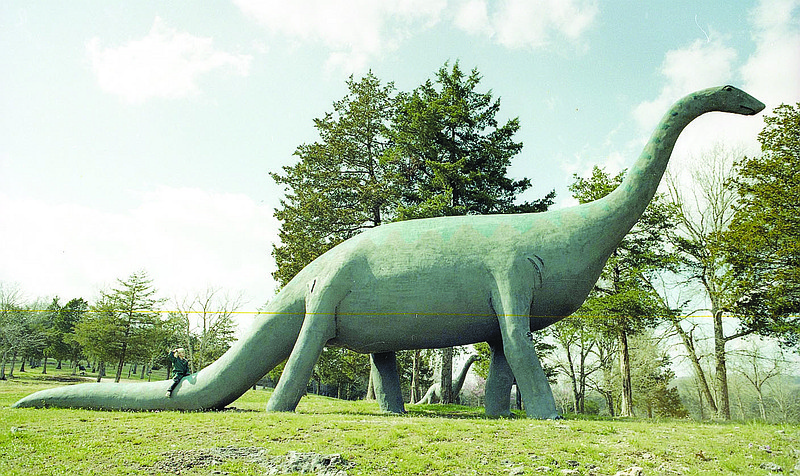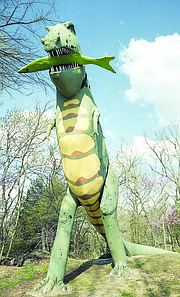"We often think about statues being monuments to important historical figures or events,” Marie Demeroukas begins. “But statues can be found at businesses, churches, tourist attractions, cemeteries, homes, cultural institutions, parks and town squares. Whether fine art, commercial art or folk art, many have backstories with interesting characters, differing purposes, wandering journeys and even a bit of mystery. And as we’ve seen with the recent move of the Confederate monument from the Bentonville square, statues can say something about a community, then and now.”
So it was that Demeroukas, who is archivist of more than a quarter of a million photos at the Shiloh Museum of Ozark History in Springdale, thought a program about statues might “be a fun way to explore local history.”
“It just popped into my head one day,” she says by way of explanation. “Northwest Arkansas has dozens of statues, many of which are hidden in plain sight.”
So Demeroukas started by listing the ones she knew about and “then canvased our research files and folks in the local history community for others. Early on, I decided to focus on three-dimensional figural statues — statues which depict people or animals, whether real or imagined — which have been in our area for at least 25 years. From there, I came up with 21 individual statues or statue groupings (such as Farwell’s Dinosaur Park) to investigate.”
The program would ordinarily have been presented as a “Sandwiched In” lunchtime event, but “as part of the museum’s ‘pandemic pivot,’ I recorded the presentation via PowerPoint, which was an eye-opening experience for me,” she says. “In order to improve sound quality, my ‘recording booth’ was a small walk-in closet at home. The clothes dampened the acoustics, and the closed door kept the cat from wandering in and meowing. One downside — I didn’t get to hear the audience laugh and respond to what I’m saying.”
FAQ
Sandwiched In: ‘Monumental, Mythological, Memorial, Monstrous, and Merry: Figural Statues of Northwest Arkansas’
WHEN — Noon Nov. 18
WHERE — Shiloh Museum of Ozark History in Springdale via YouTube
COST — Free
INFO — shilohmuseum.org or 750-8165


